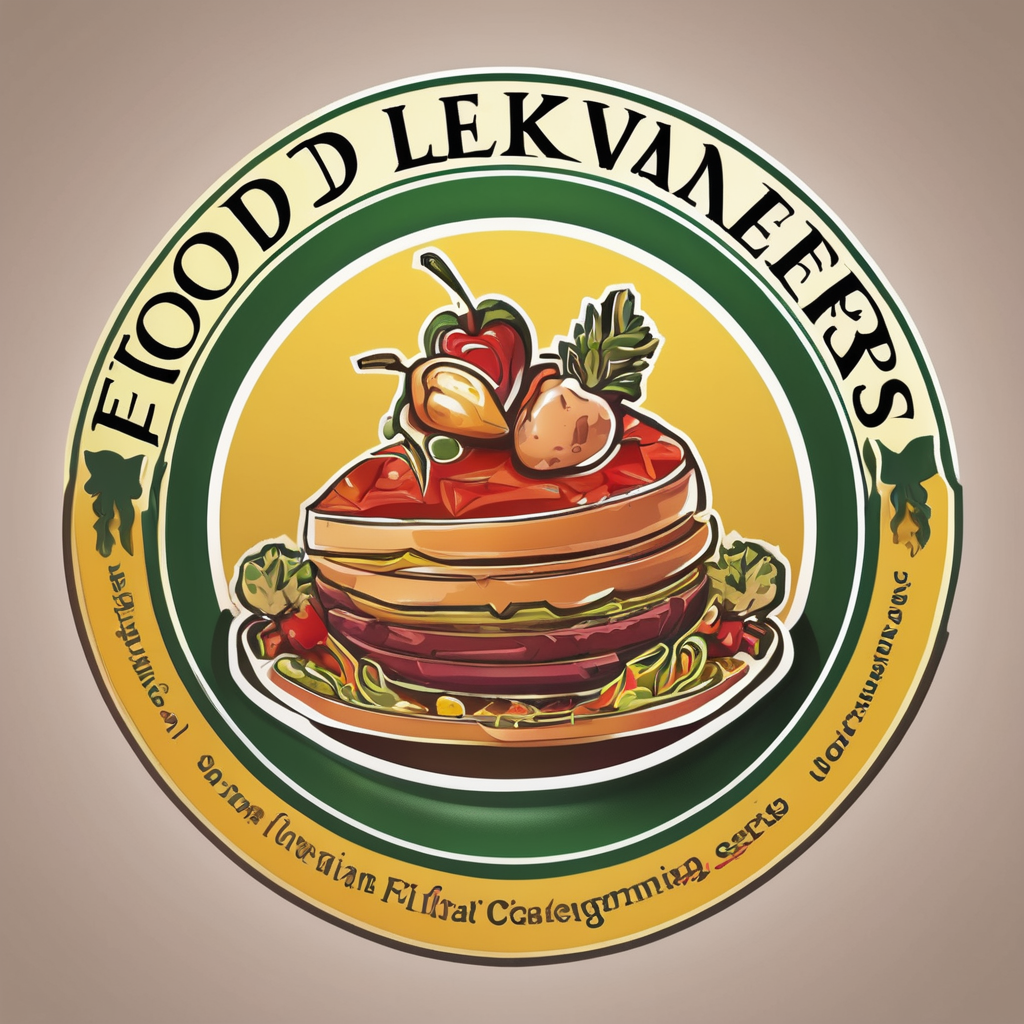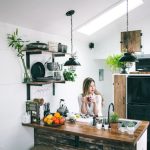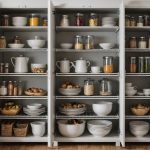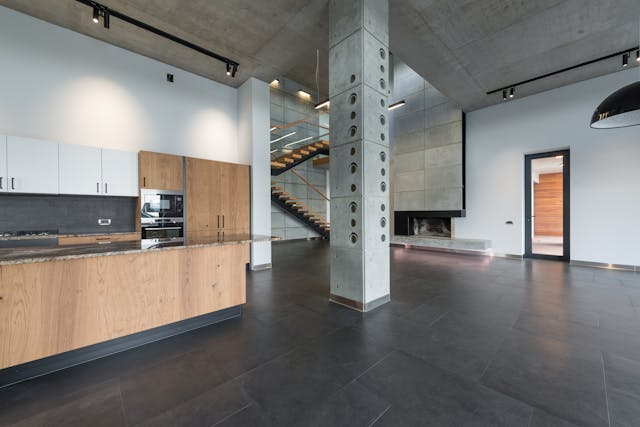A well-designed kitchen floor plan is essential for both aesthetics and functionality. By seamlessly integrating a mudroom, you enhance the flow and organization of your home. This thoughtful combination not only maximizes space but also provides a convenient transition area, keeping your kitchen tidy. Discover how to create a cohesive design that balances style and practicality, ultimately transforming your kitchen into a welcoming and efficient hub for everyday life. Embrace a layout that meets your needs while elevating your home’s overall ambiance.
Understanding the Importance of a Mudroom in Kitchen Design
Incorporating a mudroom design within your kitchen layout can significantly enhance the kitchen’s overall functionality. But what exactly is the role of a mudroom in this context? Primarily, a mudroom serves as a transitional space, acting as a buffer between the outdoors and the rest of your home. This area is crucial in maintaining cleanliness and reducing clutter, especially in high-traffic households.
This might interest you : Crafting a Kitchen for Effortless Cleaning and Hassle-Free Maintenance: Your Ultimate Guide
A well-thought-out mudroom can dramatically improve kitchen efficiency. By providing a dedicated space for storing shoes, coats, and other outdoor gear, it prevents dirt from being tracked into the kitchen. This not only keeps the kitchen cleaner but also reduces the time spent on daily cleaning tasks.
Integrating a mudroom into your kitchen layout offers several benefits. It creates a more organized environment, where items have designated spots, thus reducing clutter. This organization extends to the kitchen, allowing for a more streamlined cooking and dining experience.
In parallel : Effective Strategies for Tackling Damp and Mold Issues in Traditional UK Kitchens
Moreover, mudrooms can be tailored to meet specific household needs. Whether it’s adding extra shelving or hooks, a customised mudroom design ensures that your kitchen remains a functional, tidy, and welcoming space.
Key Design Principles for Kitchen Floor Plans
In crafting an effective kitchen floor plan, understanding the fundamental principles of kitchen design is crucial. One of the core elements is ensuring a seamless flow and functionality, which can significantly enhance the cooking and dining experience.
A well-designed kitchen layout should facilitate easy movement between the sink, stove, and refrigerator, often referred to as the “work triangle.” This principle minimises unnecessary steps and maximises efficiency. Additionally, incorporating ample counter space near these areas can further streamline kitchen tasks.
Maximising space is another key consideration. Clever use of vertical storage solutions and multi-functional furniture can significantly increase accessibility and storage capacity. For instance, installing pull-out shelves or using corner cabinets can make better use of available space.
When designing your kitchen, it’s essential to consider how the space will be used. Are you an avid cook who requires extensive prep areas, or do you need more room for dining and entertaining? Tailoring the layout to suit your specific needs ensures that the kitchen remains both functional and inviting.
Ultimately, by adhering to these design principles, you can create a kitchen that is not only efficient but also a pleasure to use.
Common Kitchen Layouts and Their Suitability for Mudrooms
Understanding how different kitchen layouts can accommodate a mudroom is essential for seamless integration. Let’s explore some popular layouts and their compatibility with mudroom integration.
L-Shape Layout
An L-shape kitchen layout is versatile, providing ample space for incorporating a mudroom. This layout offers a natural corner that can be transformed into a mudroom without disrupting the kitchen’s flow. The L-shape is ideal for smaller spaces, allowing for efficient use of available area.
U-Shape Layout
The U-shape layout is perfect for larger kitchens and offers extensive counter space. Integrating a mudroom in this layout can be done by utilising one end of the U for storage and transition space. However, care must be taken to maintain the work triangle’s efficiency.
Galley Layout
A galley kitchen layout consists of two parallel counters, making it more challenging to incorporate a mudroom. However, with clever design, such as using one end of the galley for mudroom purposes, it can still be functional. The key is to ensure that the mudroom does not impede movement within the narrow space.
Each layout has its pros and cons concerning mudroom functionality. Consider your kitchen’s size and shape to determine the best fit.
Practical Tips for Designing a Functional Mudroom
Incorporating a mudroom design that enhances functionality requires careful planning. Here are some mudroom design tips to help create a space that is both practical and inviting.
Essential Features
A functional mudroom should include essential features such as durable flooring, adequate lighting, and ventilation. These elements ensure the space can withstand daily wear and tear while remaining comfortable and accessible.
Storage Solutions
Effective storage solutions are key to a well-organized mudroom. Consider installing benches with built-in storage for shoes and other items. Hooks are invaluable for hanging coats, bags, and umbrellas, keeping them off the floor. Additionally, cabinetry can provide concealed storage for seasonal gear or cleaning supplies, helping maintain a tidy appearance.
Creating a Welcoming Space
To create a welcoming mudroom, consider incorporating personal touches such as a small rug or decorative wall art. These elements can make the space feel more inviting and integrated with the rest of the home. Using a cohesive colour scheme and thoughtful layout can further enhance the room’s appeal.
By focusing on these mudroom design tips, you can transform your mudroom into a functional space that meets your household’s needs while maintaining an organized and welcoming environment.
Visual Inspiration: Successful Kitchen and Mudroom Combinations
Finding the right kitchen and mudroom designs can transform your home’s functionality and aesthetic. Let’s explore some examples that offer visual inspiration for integrating these spaces seamlessly.
Examples of Effective Designs
Successful projects often showcase a harmonious blend of style and practicality. For instance, combining a sleek modern kitchen with a rustic mudroom can create a warm and inviting atmosphere. Another effective approach is using similar materials and colour schemes for both areas, ensuring a cohesive look.
Visual Aids
Visual aids, such as diagrams and images, are invaluable for understanding how to implement these designs. They can highlight the placement of essential features, like storage solutions and transitional spaces. These visuals also help in visualising the flow between the kitchen and mudroom, ensuring that the design is both functional and aesthetically pleasing.
Analyzing Successful Projects
By analyzing successful projects, you can gather design inspiration tailored to your needs. Look for elements like efficient use of space, clever storage solutions, and the integration of personal touches. These insights can guide you in creating a kitchen and mudroom that not only meets your household’s needs but also enhances your home’s overall design.
Potential Challenges in Integrating a Mudroom with a Kitchen
Integrating a mudroom with a kitchen can present several design challenges. One common obstacle is the limited space available in many homes, which can make it difficult to accommodate both areas without sacrificing functionality. Ensuring that the kitchen and mudroom integration does not disrupt the kitchen’s workflow is crucial. This requires careful planning to maintain the efficiency of the work triangle while incorporating adequate storage and transitional space.
To overcome these layout and space challenges, consider using multi-functional furniture and storage solutions that maximise available space. For instance, installing benches with storage or using vertical shelving can help utilise every inch efficiently. Additionally, selecting compact yet durable materials can reduce clutter while maintaining a clean aesthetic.
Planning for future needs is another critical aspect of successful integration. As household dynamics change, so too might the requirements for the mudroom and kitchen. By anticipating these changes, such as potential increases in storage needs or adjustments in layout, you can ensure that the integrated space remains functional and adaptable over time. This foresight will help create a harmonious and enduring connection between the kitchen and mudroom.
Enhancing Aesthetic Appeal: Style Considerations for Mudrooms
When planning a mudroom, it’s essential to consider its aesthetics to ensure it complements your home’s style. A cohesive design style between the kitchen and mudroom can create a harmonious flow throughout your space. Start by selecting a design style that reflects your personal taste and matches the existing architecture of your home.
Choosing a Design Style
Consider styles like modern, rustic, or traditional to guide your choices. Each style has distinct features, such as clean lines in modern designs or natural materials in rustic settings. Your choice should resonate with your overall home decor.
Colour Schemes and Materials
Select a colour scheme that enhances the visual appeal of both the kitchen and mudroom. Neutral tones offer versatility, while bold colours can make a statement. Materials like wood, stone, or metal can add texture and depth, creating an inviting atmosphere.
Personal Touches
Incorporate personal touches to reflect your unique style. Artwork, family photos, or decorative pieces can make the mudroom feel more personalised and welcoming. By thoughtfully combining these elements, your mudroom will not only be functional but also aesthetically pleasing.
The Impact of Lighting on Kitchen and Mudroom Functionality
Lighting plays a crucial role in enhancing the functionality and atmosphere of both kitchen and mudroom spaces. A well-lit kitchen improves visibility during cooking and meal preparation, while a bright mudroom ensures safety and ease of use.
Importance of Natural and Artificial Lighting
Incorporating a balance of natural and artificial lighting is essential. Natural light can be maximised through windows or skylights, providing a warm and inviting ambiance. Artificial lighting, such as overhead fixtures and under-cabinet lights, ensures consistent illumination, especially during evenings or cloudy days.
Tips for Optimizing Lighting
To optimise kitchen lighting, consider layering different types of lights. Task lighting near workspaces like the stove or sink enhances precision. Ambient lighting, such as ceiling fixtures, creates overall brightness, while accent lighting highlights specific features or decor. For mudroom lighting, prioritise fixtures that can withstand moisture and dirt, ensuring durability and longevity.
Creating a Bright and Inviting Atmosphere
A combination of strategic lighting choices can transform these areas into bright and welcoming spaces. Use light-coloured walls and reflective surfaces to amplify light, and consider dimmable options for adjustable brightness levels, catering to various needs and preferences.
Budgeting for Your Kitchen and Mudroom Remodel
Planning a kitchen remodel budget is essential for achieving a cost-effective design that meets your needs. Estimating costs accurately can prevent unexpected expenses and ensure a smoother renovation process. Begin by assessing the scope of your project, including materials, labour, and any additional features you wish to incorporate.
Estimating Costs
To estimate costs, research average prices for materials and labour in your area. Consider factors like the size of your kitchen and mudroom, desired finishes, and the complexity of the design. Consulting with professionals can provide a more precise estimate and help identify potential cost-saving opportunities.
Cost-Saving Measures
Implementing cost-saving measures without compromising quality is possible with strategic planning. Opt for durable yet affordable materials, such as laminate countertops instead of granite, or vinyl flooring instead of hardwood. Reusing existing fixtures or cabinets can also reduce expenses while maintaining functionality.
Prioritizing Features
When working within budget constraints, it’s crucial to prioritise features that enhance the space’s practicality and aesthetic appeal. Focus on essential elements, such as efficient storage solutions or energy-efficient appliances, before considering luxury additions. By balancing your desires with budget realities, you can create a remodel plan that satisfies both your vision and financial limits.
Future Trends in Kitchen and Mudroom Design
Exploring kitchen design trends and mudroom innovations reveals exciting possibilities for the future of home layouts. Emerging trends focus on enhancing both functionality and aesthetics, with a strong emphasis on sustainability and smart technology.
Emerging Trends in Functionality
Kitchens and mudrooms are evolving to become more multi-functional. Open-plan designs are increasingly popular, allowing for seamless transitions between cooking, dining, and storage areas. In mudrooms, modular storage solutions are gaining traction, offering flexibility to adapt to changing household needs.
Innovations in Materials and Technology
Innovations in materials are driving the evolution of modern designs. Eco-friendly materials like recycled glass and bamboo are becoming staples in kitchen design trends. Additionally, smart technology integration, such as app-controlled lighting and appliances, is transforming how these spaces are used, providing convenience and energy efficiency.
Predictions for Future Layouts
Future kitchen and mudroom layouts are expected to prioritise adaptability and personalisation. Customisable elements that cater to individual preferences will become more prevalent. As homes continue to embrace technology, expect further integration of IoT devices, enhancing connectivity and control over household environments.






